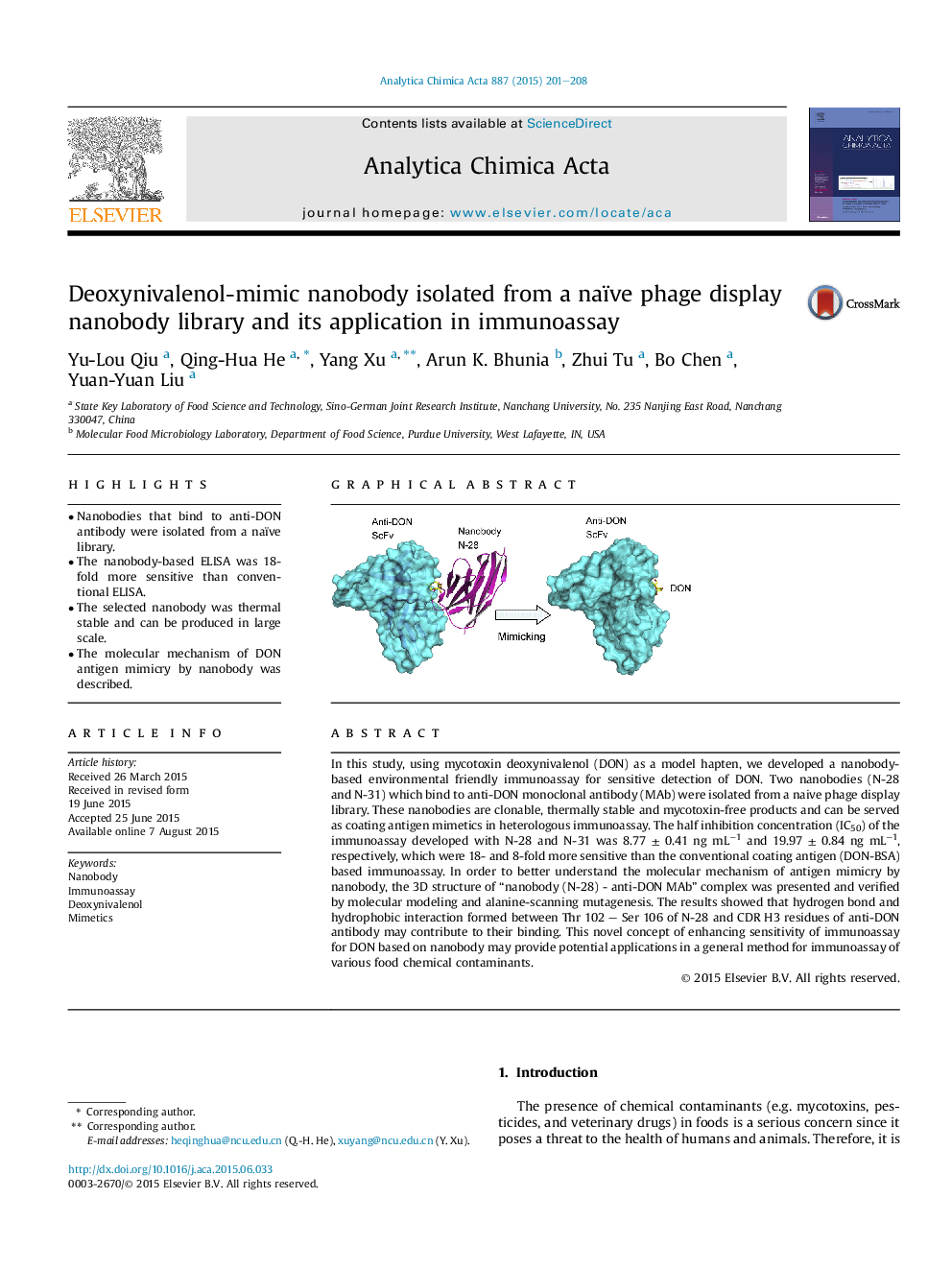| Article ID | Journal | Published Year | Pages | File Type |
|---|---|---|---|---|
| 1163574 | Analytica Chimica Acta | 2015 | 8 Pages |
•Nanobodies that bind to anti-DON antibody were isolated from a naïve library.•The nanobody-based ELISA was 18-fold more sensitive than conventional ELISA.•The selected nanobody was thermal stable and can be produced in large scale.•The molecular mechanism of DON antigen mimicry by nanobody was described.
In this study, using mycotoxin deoxynivalenol (DON) as a model hapten, we developed a nanobody-based environmental friendly immunoassay for sensitive detection of DON. Two nanobodies (N-28 and N-31) which bind to anti-DON monoclonal antibody (MAb) were isolated from a naive phage display library. These nanobodies are clonable, thermally stable and mycotoxin-free products and can be served as coating antigen mimetics in heterologous immunoassay. The half inhibition concentration (IC50) of the immunoassay developed with N-28 and N-31 was 8.77 ± 0.41 ng mL−1 and 19.97 ± 0.84 ng mL−1, respectively, which were 18- and 8-fold more sensitive than the conventional coating antigen (DON-BSA) based immunoassay. In order to better understand the molecular mechanism of antigen mimicry by nanobody, the 3D structure of “nanobody (N-28) - anti-DON MAb” complex was presented and verified by molecular modeling and alanine-scanning mutagenesis. The results showed that hydrogen bond and hydrophobic interaction formed between Thr 102 – Ser 106 of N-28 and CDR H3 residues of anti-DON antibody may contribute to their binding. This novel concept of enhancing sensitivity of immunoassay for DON based on nanobody may provide potential applications in a general method for immunoassay of various food chemical contaminants.
Graphical abstractFigure optionsDownload full-size imageDownload as PowerPoint slide
